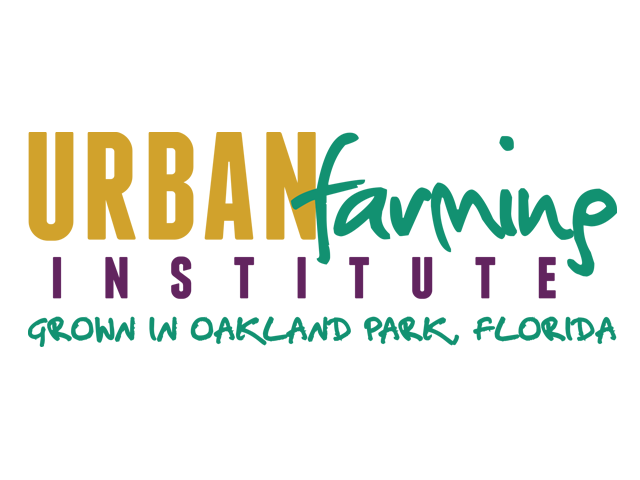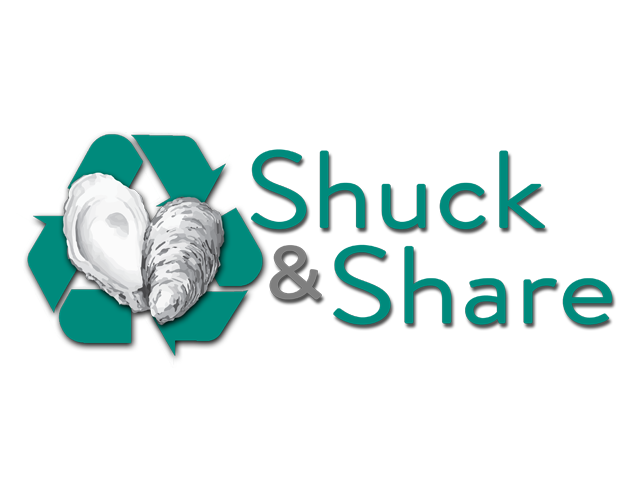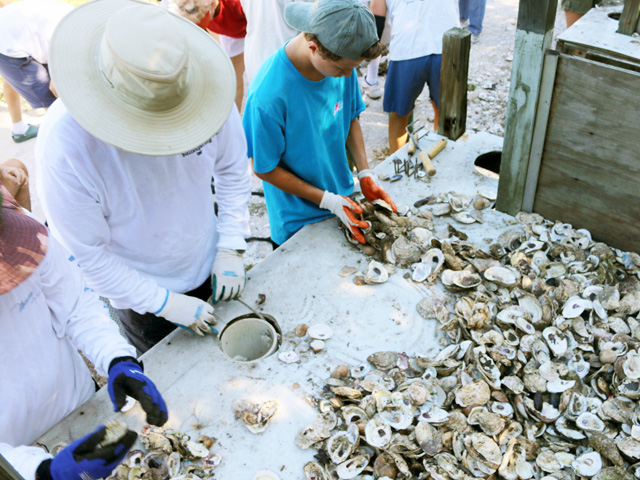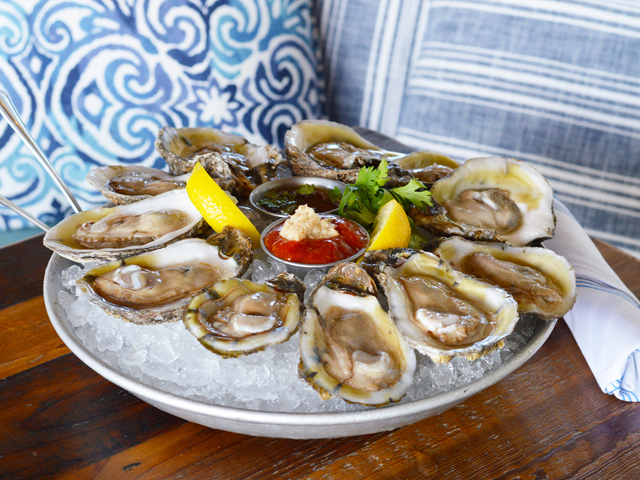
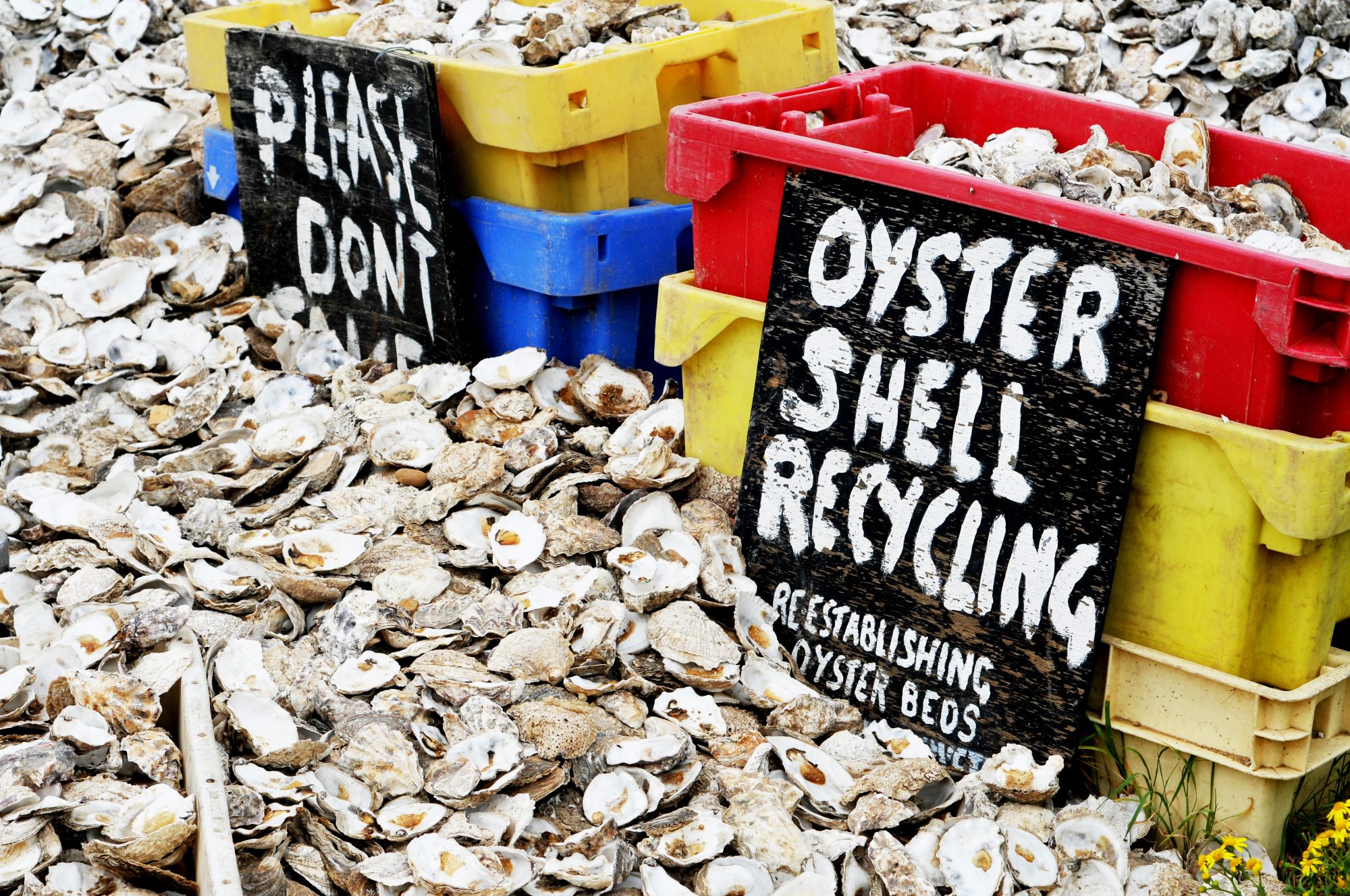
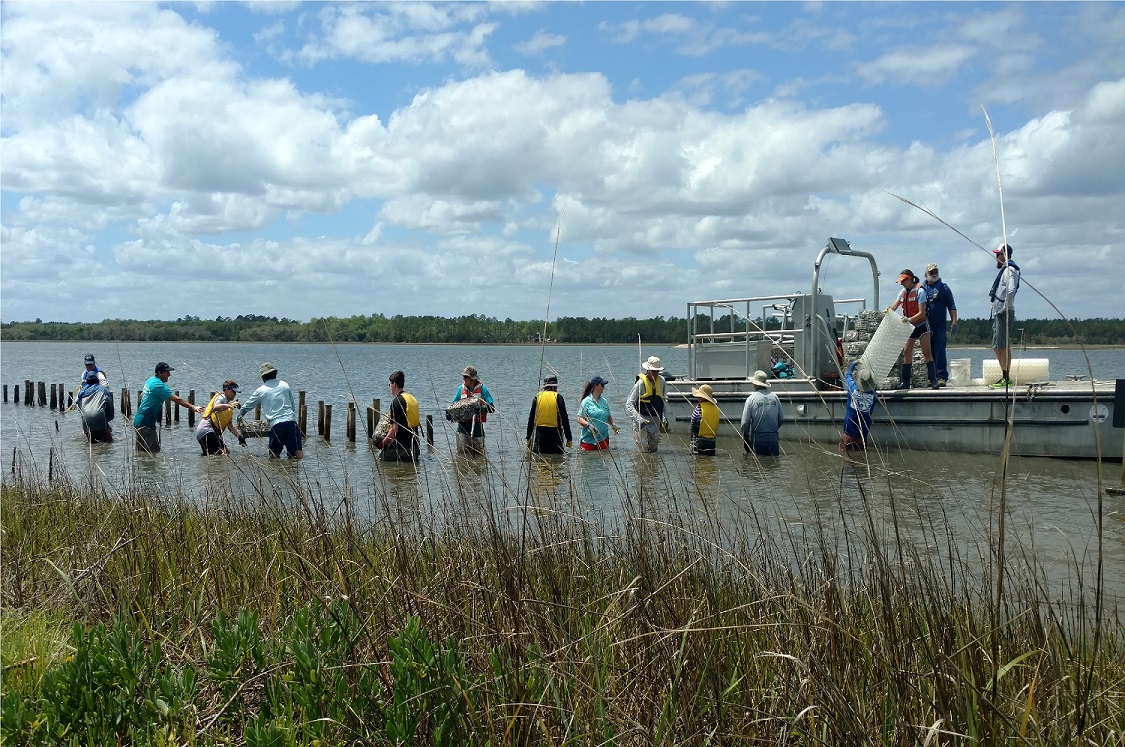
how your tiki tiki oyster shells are used to create more oysters.
Oysters are playing a big role in global ocean health and recycling their shells helps create a place where future generations of oysters can grow and help build a healthy ecosystem. Tiki Tiki collects all the shells that we serve guests and gives them several times a week to the Urban Farming Institute so they can be used in creating new oyster beds which also serve as a habitat for fish, shrimp, crabs and other sea life while controlling erosion of the coastal shoreline and mitigating storm surges. The more oyster beds we build through recycling means we can have more oysters!
Adult oysters breed in the summer and each releases millions of fertilized eggs. Free swimming oysters need to attach themselves to a hard surface to continue their growth or they will die. Oyster shells are the best surface for young oysters, also called “spats”, to bond to because the reefs are extremely resistant to waves and storms and the sturdy shells of their ancestors preemptively help the baby oysters ward off predators.
Oyster shells are mostly calcium carbonate which is a chalk and this is a natural buffer of ocean acidity which is a growing problem affecting all shellfish populations. So, using oyster shells for reefs also contributes to the increases in the growth of steamer clams and other species.
After the shells leave our restaurant, they are taken to a special enclosure at Port Everglades where they are washed and then laid out to dry for several months or up to a year. This process kills harmful bacteria and helps preserve the quality of the marine environment when the shells are reintroduced to the waterways and ocean. Usually, the shells are placed near existing beds to add to the area where the spats can live thereby increasing the oyster population. They can also be used to start new oyster beds with the help of seed oysters which are about an inch long and a year old or by placing them in tanks with larvae that attached themselves to the shells and are then transported to designated locations. After a few years new beds become a sustained habitat for future generations of oysters.
fun facts about oysters:
They have been around for 15 million years.
An oyster becomes an adult after one year and can live as long as 20 years.
Oysters can change their sex. They often do it more than once.
Oysters are vegetarian and eat algae that they filter out of the water.
Oysters breath like fish through gills.
They filter 50 gallons of water a day.
Oyster beds help regenerate the growth of sea grasses.
An oyster shell can become the home to dozens of baby oysters.
They were first cultivated by the ancient Greeks.
The name is from the French oistrea, and derived from the Greek ostrean.
